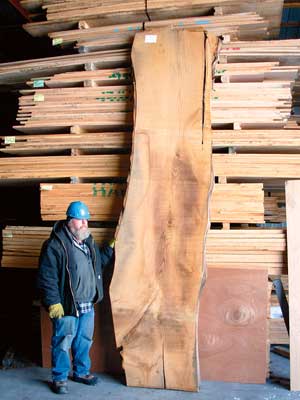
I was looking through my stack of old Woodworker’s Journals and came across the excellent article on American Chestnut in the June 2008 issue. I have a question about wormy chestnut that no one seems to be able to answer. First, some background.
My daughter and son-in-law bought an older home here in the Pittsburgh area last fall. The house had one very unusual bedroom: it was made to look like the inside of a log cabin. The walls were paneled in semi-circular boards about 7 inches wide at the underside and 1 3/4 inches thick at the apex of the log shape. The logs were nailed horizontally to the studs and shiplapped together. One of the neighbors told us that the house was built for a bachelor hunter who used the room as an office and to display his trophies. My wife and my daughter took one look at the room and declared; “No child of mine is going to sleep in that”.
After we pried the logs off the wall, we realized that they were wormy chestnut, which corresponded with the age of the house and time of the chestnut blight. The house was built in 1931. The logs were uniform and obviously made on a shaper. I have been able to mill the logs into 1 inch thick boards 4 3/4 inches wide. I got about 150 board feet that I’m making into a bedroom set for my grandson.
The logs milled up beautifully. I was able to flatten the back in one pass over the jointer and the boards went through the table saw with absolutely no kickback. It was as if, borrowing a term from metalworking, the boards were annealed.
Now for my question; you knew there was a question in here somewhere.
Was this annealing due to the fact that the boards were cut from trees that were standing dead, or was it the fact that the logs were inside of a warm dry house for 78 years, or was all American chestnut that way? – Ken Bayer
Rob Johnstone: The stability and workability of the wood was likely the result of a few factors. First, as you suggest, the wood was probably harvested from standing dead timber. Second, the stock was sorted through before it was machined into the log paneling. There was such a large supply of wormy chestnut at the prime of its popularity that the questionable stock was set aside for less demanding tasks. And third, as you said, the stock had decades out of the weather to cure down or reach a state of equilibrium. Although there is much debate about how the characteristics of wood change over long spans of time (Is one reason Stradivarius violins sound so good because their wood has aged for 300 years?), anyone who has worked red oak recycled from a barn and red oak from a lumberyard can notice the difference.
I am jealous of your newly acquired stash of chestnut.






